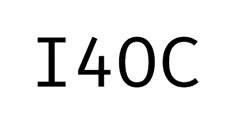Application of a vocational maturity program in students of secondary school victims of social marginalization
DOI:
https://doi.org/10.18050/psiquemag.v9i2.2739Keywords:
Vocational maturity program, Vocational guidance program quarantineAbstract
The present research work, "Program" I decide my future "in vocational maturity, in students who are victims of social marginalization of the 4th grade of the advanced cycle of CEBA Herman Busse de la Guerra, 2095, 2018.", sought to know the effects it produces the intervention of a vocational guidance plan, made up of workshops based on psychopedagogical principles, and whose didactic application is based on the objectives and principles of the proposal. The research was of an applied type, of a pre-experimental design. The study group consisted of 84 students, distributed in 42 in the experimental group and 42 in the control group. The pre-test was applied using the emotional maturity questionnaire where scores were obtained in the emotional maturity dimension (t = 1.21, p = 0.23), in the planning dimension (t = 0.62, p = 0.54), the exploration dimension (t = 1.11, p = 0.27), the information dimension (t = 1.11, p = 0.27) and finally in the decision-making dimension (U = 844, p = 0.73) showing that there are no statistically significant differences in the pretest in the experimental group and control group. The post-test results show us that after having applied the vocational program, the control and experimental groups did show significant differences in its five dimensions: In emotional maturity (t = 9.28, p = 0.00), in the planning dimension (t = 0.62, p = .001), in the exploration dimension (t = 4.865, p = 0.000), in the information dimension (U = 314.5, p = 0.000), and in the decision-making dimension (U = 71.00, p = 0.000). The study verified the effectiveness of the program "I decide my future"
Downloads
References
Anaya, D. y Repetto, E. (1992). Estudio de la madurez vocacional de los estudiantes españoles de educación secundaria mediante el Career Development Inventory – School Form. UNED.
Bisquerra, R. (1998). Modelos de orientación e intervención psicopedagógica. Praxis.
Campbell, D y Stanley, J. (1973). Diseños experimentales y cuasi experimentales en la investigación social. Ed. Amorrortu.
Frisancho, A. (2006). La orientación vocacional en los colegios públicos y privados de Lima: situación actual y propuesta de un programa de acción para la secundaria pública. Revista de investigación en psicología, 9(1), 23-35. https://doi.org/10.15381/rinvp.v9i1.4027
Hernández, R., Fernández, C. y Baptista, P. (2010). Metodología de la investigación (5ª ed). Mc Graw Hill.
Lucas, S. y Carbonero, M. (1999). Desarrollo del autoconocimiento y autoeficacia a través de un programa de orientación profesional en educación secundaria. Universidad de Valladolid.
MINEDU. (2011). Tutoría y Orientación Educativa. Orientación vocacional. Punto y Grafía.
Sánchez, H. y Reyes, C. (2006). Metodología y diseños en la investigación científica. Visión Universitaria.
Super, D y Thompson, A. (1981). Career Development Inventory. Columbia University.
Valles, A. y Álvarez, J. (1998). Orienta Plus. Programa de orientación vocacional. Escuela Española.
Downloads
Published
How to Cite
Issue
Section
License
Copyright (c) 2020 PsiqueMag

This work is licensed under a Creative Commons Attribution-NonCommercial-NoDerivatives 4.0 International License.
You are free to:
- Share — copy and redistribute the material in any medium or format
- The licensor cannot revoke these freedoms as long as you follow the license terms.
Under the following terms:
-
Attribution — You must give appropriate credit, provide a link to the license, and indicate if changes were made. You may do so in any reasonable manner, but not in any way that suggests the licensor endorses you or your use.












